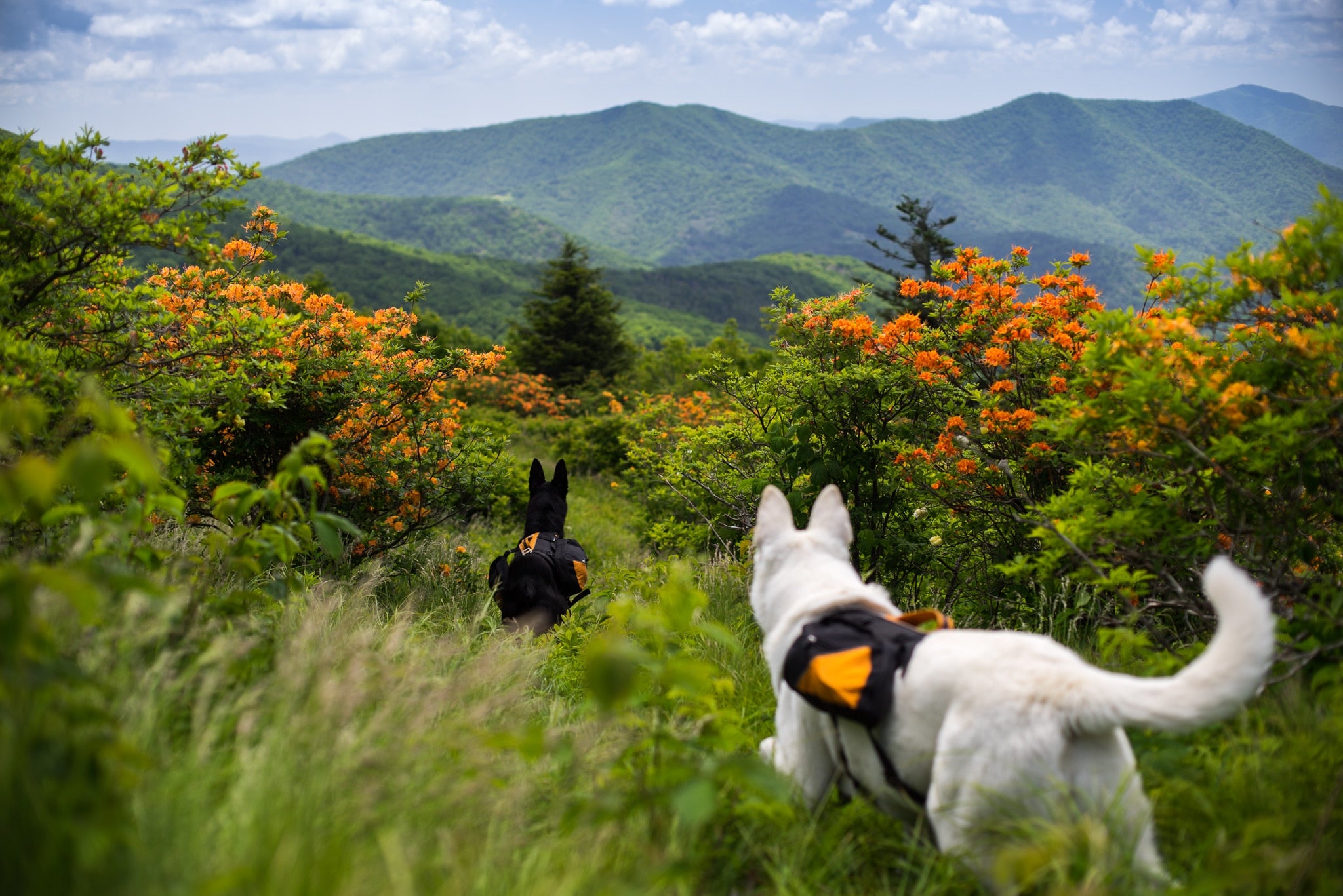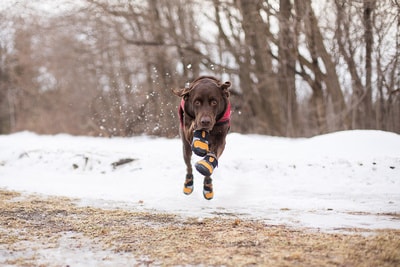
How Much Exercise Does Your Dog Need?
Posted by Dr. Susan O'Dell DVM on 28th January 2016

A tired dog is a good dog. No matter the size of the dog, every pup needs a physical outlet to expend extra energy and maintain health and fitness. Regular exercise can improve your dog’s mental health and reduce unwanted behaviors done out of anxiety or boredom. It is important to note that each animal is an individual and you need to modify your program. We must make adjustments for age, injury and be mindful of environmental conditions too, such as extreme weather.
For a general guideline to exercise, we can divide dogs up by their breeds and what they were originally bred to do for their owners. However, remember to tailor your program to your dog’s needs.
Herding group
These dogs include shepherds, sheepdogs and collies. They are the equivalent to a canine bouncy ball. They have very high exercise needs and should get at least 60-90 minutes of higher intensity exercise daily. Herding dogs were also bred to have above average intelligence, so make them work their brains! Intersperse training sessions with physical workouts to keep the routine fresh and interesting for both you and your herder. These dogs are at higher risk for behavioral problems if you are not careful to channel their physical and mental energies into appropriate activities!
To keep them occupied, these dogs would do well in games of hide and seek, agility competitions and sports that test both their body and mind like canine musical freestyle; which is a mixture of tricks, obedience training and dancing.

Sporting group
This group is comprised of retrievers, spaniels, setters and pointers, perhaps one of the most popular breeds from this group is the Labrador retriever. This active dogs were bred for a long day of work, and historically many have been used for hunting companions for years. Due to this breeds being natural very energetic, active and alert, they can require regular and invigorating exercise methods.
Lauren of @palmettomoonpointers
and her Pointer Sutton, know about the mandatory exercise these breeds require.
“They are quick, agile, smart, can climb most everything (Sutton loves to climb
trees!) and they have the endurance of a train! But along with their extensive
physical exercise needs, they require a lot of mental exercise to tire them out
(most won't tire even after a long off leash hike!). Short trick training
throughout your day will help keep your sanity with a pointer! “
It is recommended that these pups get at least 1 to 2 hours
of daily exercise that is at least of moderate intensity level. These dogs would thrive in fetch related sports like Disc Dog and Dock Dog. They will also make great running or biking
partners, using dog running gear can make the workout more
enjoyable for both parties.
Non-Sporting group
This group is made of a wide variety of dog breeds from the Dalmatian to the poodle and even the French Bulldog; this is because these dogs don't fit into any other groups. The dog's personalities and exercise needs/abilities will vary drastically which is why it's best to base your pup's exercise regime on which group they fit the best in. For any dog it is important to consult a veterinarian before involving your dog in any strenuous activity, and do the differentiation of this group this is especially important.
Terrier group
From the little Cairn to the larger Airedale, these dogs are generally bouncy and charismatic pooches. Although they have significant exercise requirements, these dogs are smaller than the herding and sporting members, and will often get a fair amount of daily exercise around the house. They should still get a 30-60 minute moderate intensity walk daily.
The natural digging instincts of these breeds makes them the perfect contender for sports like Earthdog; where dogs go through underground tunnels to find their prey.
Hound group
This is a very diverse group that encompasses two types of dogs – the sight hounds and scent hounds. Sight hounds like Greyhounds, wolfhounds, and deerhounds have lower exercise needs. Although they have very muscular builds, they are sprinters that release energy in quick bursts. A 20-30 minute daily walk will suffice, but allow them a couple of harder sprint workouts per week. Scent hounds like Beagles, Bloodhounds and Coonhounds have higher exercise needs, similar to the sporting group.
There dogs make perfect hunting companions. In addition to this, they excel at sports that require 'hunting' like Lure Chasing. Lure Chasing is when your pup chases a mechanically drawn lure, kicking into their natural hunting instincts.
Toy group
Many breeds fit into this category, including Poodles, Chihuahuas and Maltese. Even though these cuties are smaller than the rest, they still need exercise! They have a propensity toward obesity and often do not get the level of daily activity that they require. They can, however, get a significant amount of exercise in a much smaller area.
These dogs can get much of their exercise within the comfort of your home, due to their size! A good game of fetch in the living room can be a great aerobic workout for the wee pups. These dogs would also excel in obedience and agility competitions.

Important Things to Remember:
Brachycephalic Dogs
These squash-faced dogs, like the Pug and bulldogs, were not created for marathon running. A shortened muzzle and wrinkly face might be irresistible, but they impede airflow and put these dogs at risk for overheating and oxygen deprivation. Avoid exercising these noisy breathers during mid-day heat or humid weather, and allow frequent breaks for cooling down.
Exercising Young Dogs
According to Dr. Brenton Gwinn of the
Palmetto Veterinary and Medicine, you need to be careful when exercising your
puppy. “The key is moderation. The
number one cause of growth plate and soft tissue injuries is repetitive
exercise with a young puppy, so leave your leash and running shoes at home
until your pup is at least 18 months, when their growth plates have had the
chance to close. Short, strolling & rambling stop and sniff walks are great
for puppies and great for socialization, but be prepared to leave your pups at
home for long hikes (unless you're willing to stick them in a backpack!)”
About Weather
Weather conditions are an important consideration for all dogs, not just the Brachycephalics. Pets can be victims of frostbite or heat stroke just like their people. If you live in the snowy, icy north, make sure you clean your dogs’ paws after an outing to remove snow and salt buildup that can be damaging to the pads. Dogs with thin hair coats may benefit from a nice dog coat or hoodie in the colder months. In the summertime, paws can also be damaged on hot asphalt or abrasive surfaces like the sandy shore. During any weather, it’s important to keep your dog hydrated. Bring along a compact dog travel bowl and fill it from your own water bottle.
Suggested Activities
Physical activities
There are a variety of different ways to wear out the over-energized dog in your life. Good old fetch is a fabulous method to exhaust Fido with minimal output of your own energy. Along those lines, you can employ a tennis racket to get even greater canine wear down. Swimming is a fantastic way to reap the benefits of exercise without the dangers of repetitive impact. Water workouts are extremely taxing, so increase swim times very gradually, starting with 1-2 minutes. You may also want to start out with a dog life vest, especially if you are far from shore. This is one of the best ways to maintain muscle mass in older dogs with joint disease and arthritis.
Mental exercises
A good brain game can be almost as tiring as a long hike. Some dogs enjoy a food toy, which can be purchased at most pet stores. These toys require the dog to knock the toy around to make food fall out of small holes. It can be filled with small, low calorie treats or even a portion of his regular meal. If your dog is scent driven, he may enjoy searching for bits of food or treats hidden throughout the house. Another option is to drag a delicious smelly morsel, like tripe, meandering through the yard so he can sniff out your path.
After exercising your furball, spend some calm time with your dog before leaving him alone or confining him in a crate. It isn’t easy for them to suddenly shift out of high gear, particularly if they are left alone. Give him some time to transition, and it should become faster and easier for him to relax over time.

Recent posts
Ambassador Highlight: Bordercolliedraco
Draco the Border Collie loves exploring with his dog mom Kristina in Florida. We caught up with these Kurgo Ambassadors and asked them their favorite tips, tricks, and places they'd like to go.
Ask a Vet: Is Alternative Medicine Safe?
We asked veterinarian Dr. Susan O'Dell, "What are your thoughts on small animal vaccinations? Can you over vaccinate?" Read her response below! Vaccinations are an important topic to address for every pet that I see. The diseases for which we vaccinate can cause severe sickness or death in cats and dogs (rabies is also fatal [...]
How Dogs Know to Comfort us
It often seems that our dogs can sense our moods. Have you ever felt upset, and then looked down to find that your dog has run over to you? Recent research has delved into the nature of this bond. Are dogs responding to our feelings, our body language, or something else? Read on to find [...]


